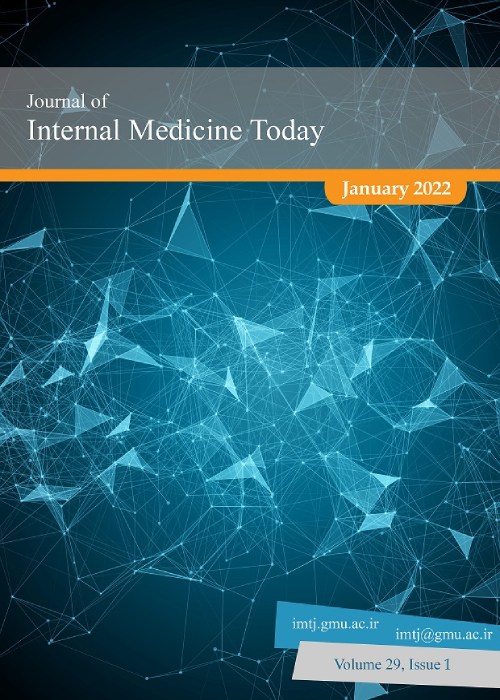A Comparison of Face to Face and Video-based Education on Attitude Related to Diet and Fluids Adherence in Hemodialysis Patients
Author(s):
Abstract:
Background And Aim
Chronic renal failure is one of the biggest public health problems. The most common alternative treatment method for patients is hemodialysis. Adherence to diet and fluids combined with dialysis is the cornerstone of renal failure treatment. By informing hemodialysis patients, we can help them have a proper diet and reduce mortality and complications of toxins. Face to face education is one of the most common methods of training in health care systems. But advantages of video training are easy and cost-effective but it is something virtual. So, the aim of this study was to assess the comparison of face to face and video-based education on attitudes related to diet and fluids adherence in hemodialysis patients. Materials And Methods
This study is a randomized clinical trial which included 75 hemodialysis patients admitted to the hemodialysis wards in 17 Shahrivar and Quaem hospitals in Mashhad. They were divided randomly into face to face and video-training groups. In the face to face educational group, 2 educational sessions were accomplished during dialysis with a one-week time interval. In the video-based educational group, a produced film, separated to two episodes, was presented during dialysis within a one-week time gap. An Attitude questionnaire was completed as a pre-test at the end of the second and fourth weeks. SPSS software version 11.5 was used for data analysis. The data were analyzed using Mann-Whitney test, t-student for two independent groups, Chi-square, Fischer exact test, and Krosal valice. Results
The two groups did not have a significant difference in demographic features. Attitude about fluid and diet adherence at the end of second and fourth weeks was not significantly different in face to face or video-training groups, respectively, (p=0.114, p=0.06). Patient's attitude had a significant statistical difference in face to face group between 3 study phases (pre-, 2 and 4 weeks post intervention, p=0.000). The same results were obtained in three phases of video-training group. (For 2nd week p=0.000, for 4th week p=0.001) Conclusion
Despite the belief that face to face method is more effective; our findings showed that video training could be as effective. It is recommended that more investment be paid to video training.Language:
Persian
Published:
Internal Medicine Today, Volume:17 Issue: 3, 2011
Page:
34
magiran.com/p924013
دانلود و مطالعه متن این مقاله با یکی از روشهای زیر امکان پذیر است:
اشتراک شخصی
با عضویت و پرداخت آنلاین حق اشتراک یکساله به مبلغ 1,390,000ريال میتوانید 70 عنوان مطلب دانلود کنید!
اشتراک سازمانی
به کتابخانه دانشگاه یا محل کار خود پیشنهاد کنید تا اشتراک سازمانی این پایگاه را برای دسترسی نامحدود همه کاربران به متن مطالب تهیه نمایند!
توجه!
- حق عضویت دریافتی صرف حمایت از نشریات عضو و نگهداری، تکمیل و توسعه مگیران میشود.
- پرداخت حق اشتراک و دانلود مقالات اجازه بازنشر آن در سایر رسانههای چاپی و دیجیتال را به کاربر نمیدهد.
In order to view content subscription is required
Personal subscription
Subscribe magiran.com for 70 € euros via PayPal and download 70 articles during a year.
Organization subscription
Please contact us to subscribe your university or library for unlimited access!


